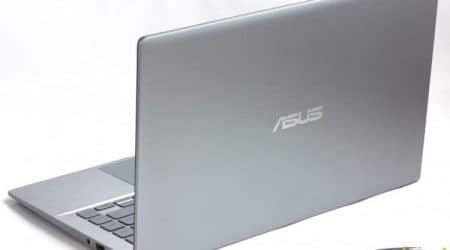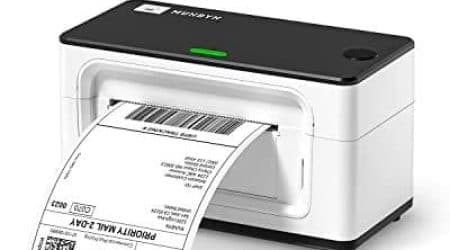In the digital age, the world of literature has transformed remarkably, granting avid readers unprecedented access to a vast array of written works. With a few clicks, anyone can immerse themselves in countless stories, educational texts, and classic novels. This shift has opened the doors for individuals seeking to enrich their minds without straining their budgets.
The modern reader is fortunate to be part of a community that values sharing and accessibility. There are numerous platforms and resources that allow individuals to explore a wide selection of narratives, enriching their literary experience. Understanding the pathways to acquire literature without financial barriers can profoundly enhance one’s reading repertoire.
Uncovering methods to procure literary treasures may feel daunting at first, but numerous straightforward strategies simplify the journey. As readers, embracing these techniques enables us to dive into a plethora of written material, fostering both knowledge and enjoyment in our lives. Prepare to embark on a delightful exploration of literature that awaits just a few steps away.
Understanding Kindle’s Compatibility with Free Ebooks
When exploring digital literature, it’s essential to grasp the intricacies of device compatibility with various text formats. Many individuals are eager to expand their reading lists without incurring additional costs, making it vital to comprehend how different types of literary files interact with specific reading gadgets. This section delves into the essential elements that influence the harmonious use of digital texts on notable reading devices.
Supported Formats
Different types of documents possess unique attributes, and recognizing the supported formats will greatly enhance the reading experience. Popular choices include MOBI, AZW, and PDF, each catering to varying functionalities. Familiarizing oneself with these formats allows readers to choose materials that will seamlessly integrate with their devices.
Transfer Methods
The methods for transferring literary works to devices can impact accessibility and convenience. Options may range from wireless transfers to using a personal computer. Understanding how each method functions can streamline the process, ensuring that accessing literary content remains straightforward and enjoyable.
Finding Websites Offering Free Kindle Books
Discovering platforms that provide access to no-cost literary works can significantly enhance the reading experience for enthusiasts. With numerous resources online, readers can explore a wide range of genres and authors without spending a dime. These sites serve as invaluable treasure troves for individuals seeking to expand their personal libraries with literature from various eras and styles.
Popular Platforms to Explore
- Project Gutenberg
- Open Library
- Smashwords
- ManyBooks
- BookBub
Specialty Sites for Niche Genres
- Horror: Horror Novel Reviews
- Science Fiction: Sci-Fi Bridge
- Romance: Free Romance Books
- Mystery: Mystery Books
- Classics: Classic Reader
Each of these websites has unique offerings, ensuring that literature lovers can always find something that piques their interest. By visiting these platforms regularly, readers can stay updated on the latest additions to their collections while enjoying a diverse mix of literary styles.
Steps to Download Ebooks to Your Device
Acquiring digital books for reading on your device involves a straightforward process that can be accomplished in a few simple stages. Here’s a guide that will lead you through the actions necessary to transfer literary works to your reading apparatus efficiently.
- Identify a trusted source of digital literature. Explore various websites or platforms that offer a wide selection of titles.
- Create an account if required. You may need to register with the platform to access their collection.
- Search for desired titles. Utilize the search feature to find specific works or browse categories to discover new authors.
- Select the preferred format for compatibility with your reading device. Check if the platform provides multiple options.
- Complete the acquisition. Follow the instructions provided to finalize the procedure and secure the title.
- Transfer the literary work to your reading device. This may involve connecting via USB, using a dedicated application, or sending it via email.
- Open the content on your device. Once transferred, navigate to the library or content section to begin reading.
By adhering to these steps, you will be on your way to enjoying an expansive library at your fingertips, ready for exploration at any time.
Using Calibre for Ebook Management
Effective organization and handling of digital literature can greatly enhance the reading experience. One of the most useful tools available for managing this type of content is a dedicated software application that allows users to maintain a personal library, convert formats, and easily transfer files to various devices.
Calibre stands out as a comprehensive solution for those looking to streamline their library management. Here are some of its key features:
- Library Organization: Create a well-structured catalog by sorting titles, authors, genres, and more.
- Format Conversion: Change documents into multiple formats to ensure compatibility with various reading devices.
- Device Management: Seamlessly transfer content between your computer and different reading platforms.
- Metadata Editing: Enhance your library by editing title information, covers, and other essential details.
- Library Backup: Keep your collection safe through regular backups of your digital assets.
To begin utilizing Calibre, simply install the software and import your existing collection. With its user-friendly interface, navigating through your library and accessing various functions becomes straightforward. By leveraging such a powerful tool, readers can enjoy a more organized and accessible collection of their treasured titles.
Transferring Ebooks via Email to Kindle
Utilizing email as a means to send digital book files to your device offers a convenient way to access reading material without the need for additional software. This method provides a seamless experience, allowing users to quickly transfer files directly from their computer or mobile device. By taking advantage of this feature, one can enjoy a wider array of reading options with minimal hassle.
Setting Up Your Email
First, it is essential to ensure that the email account linked to the device is properly configured. This typically involves verifying the email address associated with the device and granting permissions for external emails to be accepted. Users should confirm that the correct email address is registered in their settings to avoid any confusion during the transfer process.
Sending the Files
Once the setup is complete, transferring files is straightforward. Simply compose a new email and attach the desired document. Sending it to the specific email address designated for the device will initiate the transfer. Upon receiving the email, the device will automatically download the attached content, making it readily available for reading. Ensure the files are in a supported format for optimal compatibility.
Exploring Project Gutenberg and Other Resources
In today’s digital age, a wealth of literary treasures is accessible to readers around the globe. Various platforms offer a vast collection of texts that cater to diverse tastes and interests. Among these resources, Project Gutenberg stands out as a primary destination for those seeking classic literature and other noteworthy works.
Project Gutenberg is a volunteer-driven initiative that digitizes and archives cultural works to foster a love for reading and education. Its mission revolves around the idea that literature should be available to everyone without any obstacles.
- Extensive Library: With thousands of titles spanning different genres and languages, the platform provides an unmatched selection of texts.
- User-Friendly Interface: Navigating the site is straightforward, allowing users to efficiently find and access content of interest.
- Community Contributions: The involvement of volunteer editors and transcribers enhances the quality and quantity of available materials.
Besides Project Gutenberg, there are several other noteworthy platforms to consider:
- Internet Archive: A non-profit digital library offering access to millions of free books, movies, music, and more. The extensive collection complements literary works with multimedia resources.
- Open Library: An initiative of the Internet Archive, this platform aims to create a web page for every book ever published. Users can borrow digital copies or access reference materials.
- ManyBooks: A curated collection of free and discounted literature, ManyBooks features classic titles alongside contemporary works in various genres, making it a versatile option for readers.
- LibriVox: For those who prefer audio content, LibriVox offers public domain audiobooks narrated by volunteers from around the world, allowing users to enjoy literature in an alternative format.
The adventure of exploring these resources opens up a new world of literary exploration, ensuring that countless works remain accessible to eager readers for generations to come.
Q&A: How to put free ebooks on your amazon kindle
How can you get free books on your Kindle device?
To get free books on your Kindle device, there are several ways to find free books. You can explore the “Top 100 Free” section in the Kindle Store, where Amazon offers hundreds of free ebooks. Another way is to sign up for a Kindle Unlimited 30-day free trial, which gives you access to a wide selection of books. You can also find free classics or use a library card to borrow ebooks and send them directly to your Kindle.
What are the steps to send an ePub or PDF file to your Kindle device via email?
To send an ePub or PDF file to your Kindle device, you need to find your Kindle email address, which can be located in your Amazon account settings under “Manage Your Content and Devices.” Once you have the email address, attach the ePub or PDF file to an email and send it to your Kindle email address. Ensure your Kindle is connected to Wi-Fi, and the file will appear on your Kindle after being processed by Amazon’s servers.
How can you use your library card to borrow ebooks and add them to your Kindle?
With a library card, you can borrow ebooks and send them to your Kindle using services like OverDrive or Libby. Search for ebooks on these platforms, borrow a book, and select the “Send to Kindle” option at checkout. You will be prompted to log in to your Amazon account and choose your Kindle device. Once completed, the ebook will appear on your Kindle if it is connected to Wi-Fi.
What are some ways to get free ebooks using the Kindle app on a fire tablet?
To get free ebooks using the Kindle app on a Fire tablet, start by visiting the Kindle Store through the app. You can find free books by checking the “Top 100 Free” section. Additionally, Amazon Prime members can access free books through Prime Reading. Another option is to use a library card to borrow ebooks from your local library and add them to your Kindle app. Many of these books are available for free and can be downloaded directly onto your Fire tablet.
How can you add free books to your Kindle and start reading them?
There are many ways to get free books to your Kindle. Amazon also offers a “Top 100 Free” section in the Kindle Store where you can find free ebooks. If you have a Kindle Unlimited subscription, you can access a wide range of ebooks at no additional cost. Additionally, you can use services like Project Gutenberg or Google Books to find ebooks that are legally available for free. Once you find the book you want, connect your Kindle to Wi-Fi, and it will automatically download onto your device.
How can you send an ebook to your Kindle from your PC using a USB cable?
To put books onto your Kindle from your PC, connect your Kindle to your PC with a USB cable. Once connected, your Kindle will appear as a drive on your computer. You can then drag and drop ebook files, such as MOBI or PDF, directly into the “Documents” folder on your Kindle. After safely ejecting your Kindle, the books will appear in your library, ready to read. Make sure the ebook format is compatible with your Kindle version.
What are the steps to email an ebook to your Kindle and how to find your Kindle email address?
To email an ebook to your Kindle, first, find your Kindle email address in your Amazon account under “Manage Your Content and Devices.” After locating the email, send an email to this address with the ebook attached, such as a PDF or MOBI file. Your Kindle needs to be attached to Wi-Fi to receive the ebook. Once processed, the ebook will appear on your Kindle for reading.
How can you get free Kindle books using your local library?
A great way to get free Kindle books is by borrowing ebooks from your local library. Check with your local library to see if they support services like OverDrive or Libby. These platforms allow you to borrow ebooks and send them directly to your Kindle. After borrowing a book, select the “Send to Kindle” option, log in to your Kindle account, and the ebook will automatically download onto your Kindle when it’s connected to Wi-Fi.




